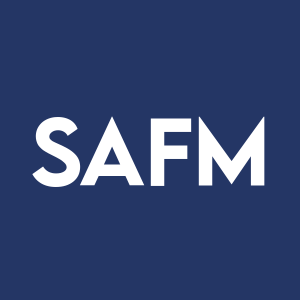Sanderson Farms, Inc. Reports Results for Second Quarter of Fiscal 2021
Sanderson Farms (NASDAQ: SAFM) announced robust results for Q2 2021, reporting net sales of $1,133.9 million, a significant rise from $844.7 million the previous year. Net income surged to $96.9 million or $4.34 per share, compared to $6.1 million or $0.28 per share in Q2 2020. The first half of 2021 saw net sales of $2,043.2 million with a net income of $106.4 million. Despite challenges from winter storms and rising feed costs, improved poultry market conditions and consumer demand contributed to these positive results.
- Q2 2021 net sales increased by 34.3% compared to Q2 2020.
- Net income for Q2 2021 was $96.9 million, significantly up from $6.1 million in Q2 2020.
- Overall realized prices for chicken products increased by 32.6% compared to last year.
- Strong demand from food service and retail boosted poultry prices.
- Q2 results included $2.75 million in uninsured losses due to severe winter storms.
- Business interruption losses related to the storms affected Q2 performance.
- Feed costs increased significantly, with corn and soybean meal prices rising by 39.7% and 40.0% respectively.
Insights
Analyzing...
Sanderson Farms, Inc. (NASDAQ: SAFM) today reported results for its second fiscal quarter and six months ended April 30, 2021.
Net sales for the second quarter of fiscal 2021 were
Net sales for the first six months of fiscal 2021 were
Results for the second fiscal quarter of 2021 reflect an accrual of
Results for the second fiscal quarter of 2020 included a net discrete income tax benefit of approximately
“Sanderson Farms operated very well in all areas of our business during the second quarter of fiscal 2021,” said Joe F. Sanderson, Jr., chairman and chief executive officer of Sanderson Farms, Inc. “Improved poultry markets more than offset feed grain costs that were significantly higher compared to last year’s second fiscal quarter, resulting in increased operating margins. The improvement in the domestic poultry markets was driven largely by increased demand from food service customers, as U.S. consumers slowly returned to restaurants and several quick serve restaurant chains featured chicken sandwiches on their menus. In addition, export demand also improved during the quarter due to higher crude oil prices, improved liquidity as a result of currency valuations and some relief from COVID-19-related restrictions.”
According to Sanderson, overall realized prices for chicken products sold to retail grocery store customers increased 6.2 cents per pound during the second fiscal quarter of 2021 compared to the same period of last year. Volumes reflected strong demand, as many consumers have continued to prepare more meals at home instead of dining out. In addition, commodity quoted markets for products from the Company’s food service plants were significantly higher across the board. Compared with the second fiscal quarter of 2020, quoted boneless breast meat market prices were approximately 60.4 percent higher, the average quoted market price for bulk leg quarters increased approximately 12.3 percent, and jumbo wing quoted market prices were higher by 88.9 percent. Market prices for chicken breast tenders averaged 54.5 percent higher than a year ago. As a result of these market improvements, overall realized prices for chicken products increased 22.3 cents per pound, or 32.6 percent. The Company’s average feed costs per pound of poultry products processed increased by 26.6 percent when compared with the second quarter of fiscal 2020, while prices paid for corn and soybean meal, the Company’s primary feed ingredients, increased 39.7 percent and 40.0 percent, respectively, compared with the second quarter of fiscal 2020.
“Looking ahead to the second half of the fiscal year, we continue to expect prices paid for feed grain to be significantly higher for the year compared to fiscal 2020,” added Sanderson. “Supplies of both corn and soybeans worldwide relative to estimated demand remain tight. Planting progress in the United States for corn stands at 90 percent this week compared to a five-year average of 80 percent and 87 percent for the same week last year. At the same time, 75 percent of the soybean crop has been planted, compared with a five-year average of 54 percent and 63 percent planted at this time last year. We expect prices through the growing season to be volatile given that good crops of both feed grains are needed to rebuild inventories. Had we priced all of our fiscal 2021 feed grain needs at yesterday’s Chicago Board of Trade closing prices, cash paid for feed grains during fiscal 2021 would be higher by
“With respect to chicken production numbers, the USDA reports that weekly broiler egg sets are well ahead of 2020 numbers that were negatively affected by COVID-19. However, certain live production challenges, including lower than historical average hatch rates and broiler livability, have resulted in fewer poultry pounds than expected given the size of the layer flock. The current USDA forecast is for United States broiler p







